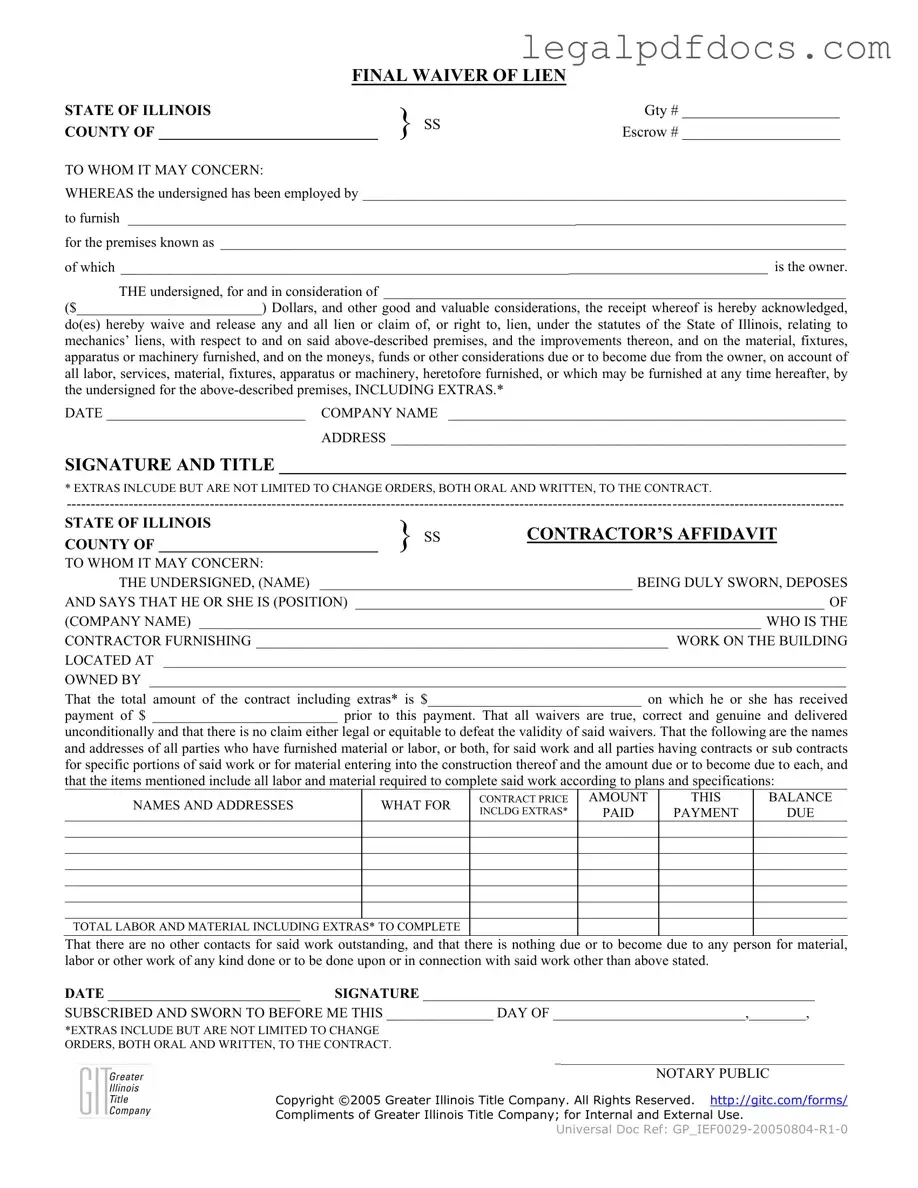Fill Out a Valid Illinois Final Waiver Of Lien Template
The Illinois Final Waiver of Lien form is a legal document that allows contractors and subcontractors to waive their right to file a lien against a property after receiving payment for their work. This form protects property owners by ensuring that all parties involved in the construction or improvement of a property have been compensated. Completing this form is essential for a smooth transaction and to prevent future disputes.
To fill out the form, please click the button below.
Open Illinois Final Waiver Of Lien Editor Here
